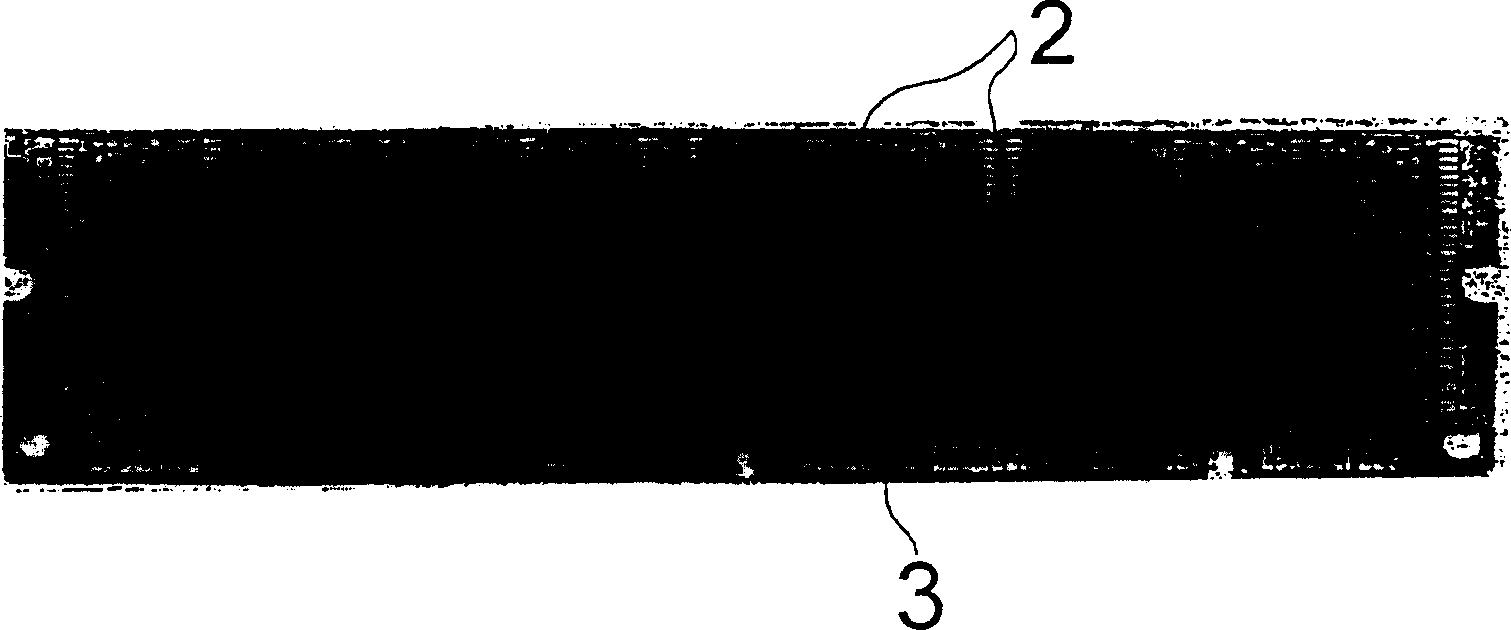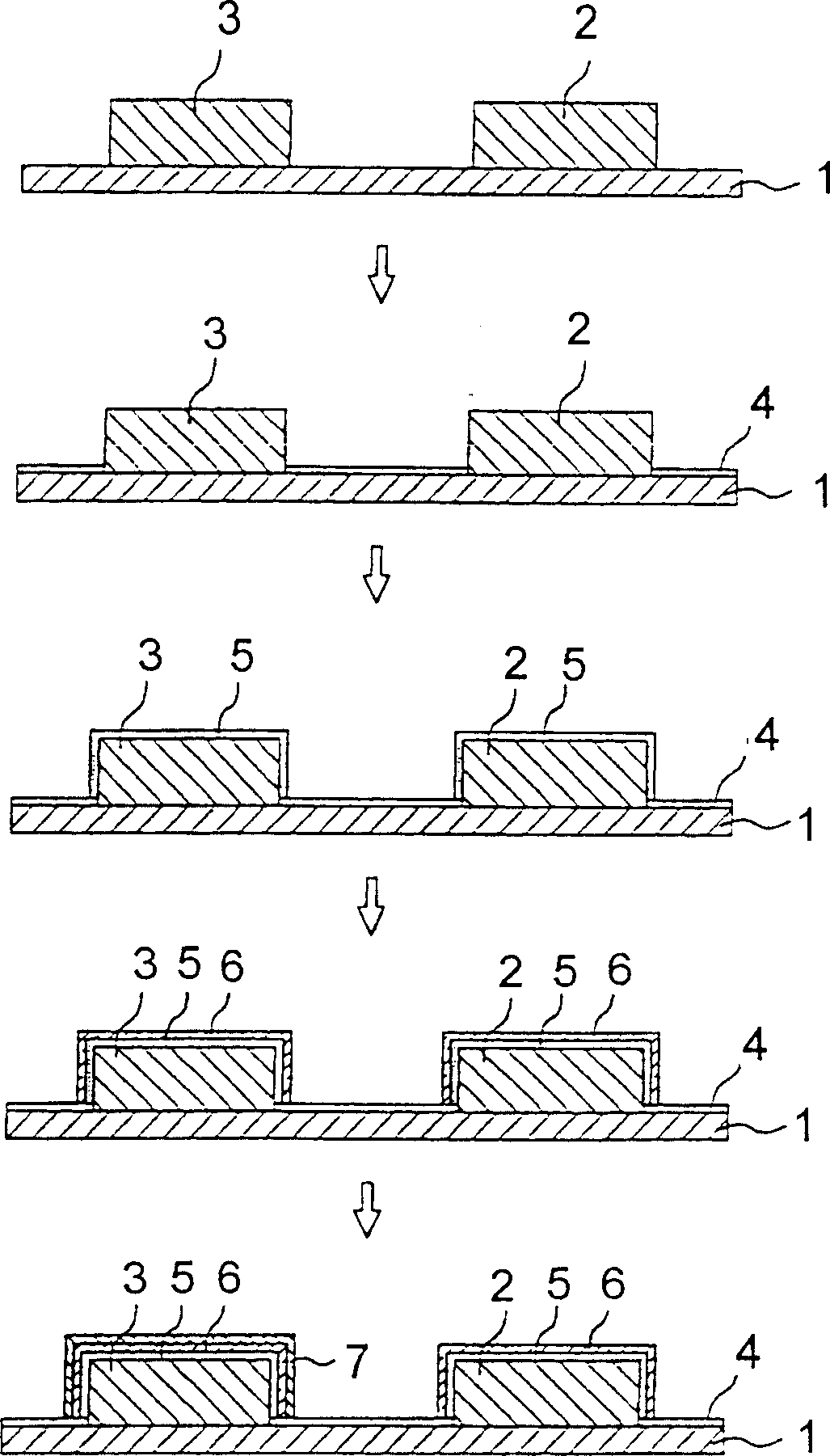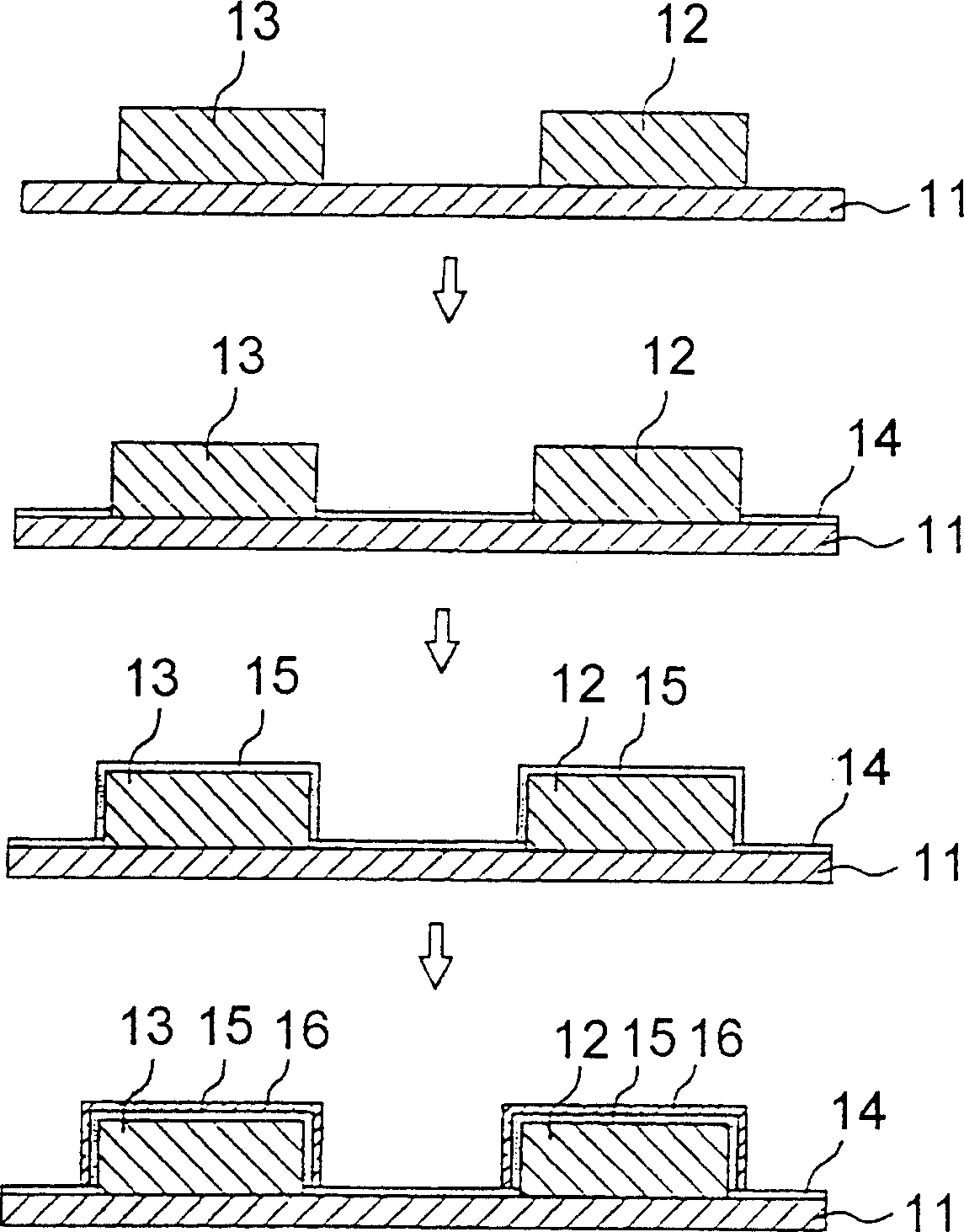Alloy plating liquid for modular printed circuit board surface treatment
A printed circuit board and surface treatment technology, applied in the secondary processing of printed circuits, printed circuits, printed circuit manufacturing, etc., can solve the problems of low economic efficiency and low productivity
- Summary
- Abstract
- Description
- Claims
- Application Information
AI Technical Summary
Problems solved by technology
Method used
Image
Examples
Embodiment 1
[0043] Prepare an aqueous alloy plating solution having the composition shown in Table 1 below, and then activate the electroless nickel-plated modular PCB with 3% hydrochloric acid solution at 25° C. for 1 minute. While adjusting the temperatures of the three plating solution baths to 60°C, 70°C and 80°C, the PCB was immersed in the plating solution for 10 minutes for plating. As such, the plating solution was not stirred and the pH of the plating solution was 4.5.
[0044] Table 1
[0045] Element
content
30g / l
10g / l
10g / l
0.25g / l
5g / l
Nitriloacetic acid
3g / l
[0046] After the plating process, the board was washed with water, dried at 80° C. for 15 minutes, and then solderability and wear resistance were measured by the following conditions and methods.
[0047] - Solderability
[0048] The p...
Embodiment 2
[0059] Prepare an aqueous alloy plating solution having the composition shown in Table 3 below, and then use 3% hydrochloric acid solution at 25° C. to activate the electroless nickel plating layer of the electroless nickel-plated modular PCB for 1 minute. The plating process was performed using a plating solution at 80° C. at plating time periods of 5 minutes, 10 minutes, and 15 minutes. At this time, the plating solution was not stirred, and the pH of the plating solution was 4.5.
[0060] table 3
[0061] Element
content
50g / l
10g / l
10g / l
0.25g / l
Potassium gold cyanide
5g / l
3g / l
[0062] Then, post-processing was performed in the same manner as in Example 1, and solderability and wear resistance were measured. The results are shown in Table 4 below.
[0063] period
Embodiment 3
[0065] Prepare an aqueous alloy plating solution having the composition shown in Table 5 below, and then use 3% hydrochloric acid solution at 25° C. to activate the electroless nickel-plated modular PCB for 1 minute. Then, the plating process was performed for 10 minutes using a plating solution at 80° C., and the stirring conditions were 0.1 m / s, 0.2 m / s, and 0.3 m / s, respectively.
[0066] table 5
[0067] Element
content
40g / l
potassium cyanide
6g / l
Methylthiourea
1.5g / l
0.1g / l
Potassium gold cyanide
2.5g / l
DTPA-5Na
3g / l
[0068] Then, post-processing was performed in the same manner as in Example 1, and solderability and wear resistance were measured. The results are shown in Table 6 below.
[0069] to stir
PUM
| Property | Measurement | Unit |
|---|---|---|
| thickness | aaaaa | aaaaa |
| thickness | aaaaa | aaaaa |
| size | aaaaa | aaaaa |
Abstract
Description
Claims
Application Information
 Login to View More
Login to View More - R&D
- Intellectual Property
- Life Sciences
- Materials
- Tech Scout
- Unparalleled Data Quality
- Higher Quality Content
- 60% Fewer Hallucinations
Browse by: Latest US Patents, China's latest patents, Technical Efficacy Thesaurus, Application Domain, Technology Topic, Popular Technical Reports.
© 2025 PatSnap. All rights reserved.Legal|Privacy policy|Modern Slavery Act Transparency Statement|Sitemap|About US| Contact US: help@patsnap.com



